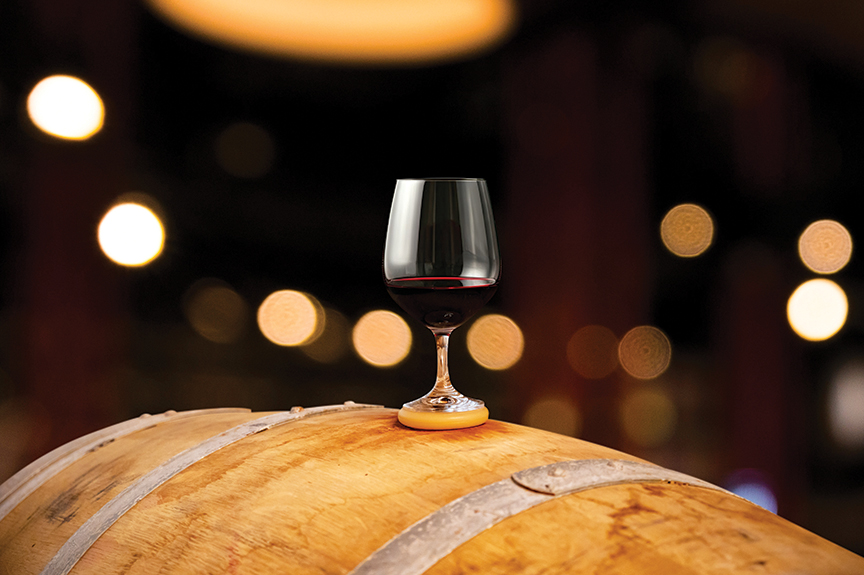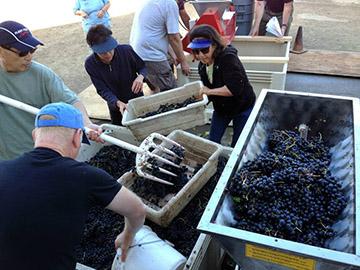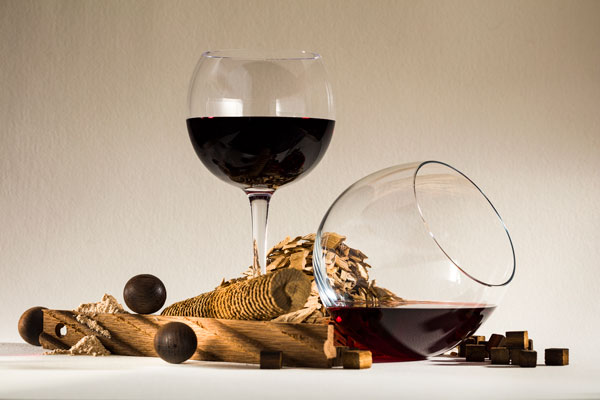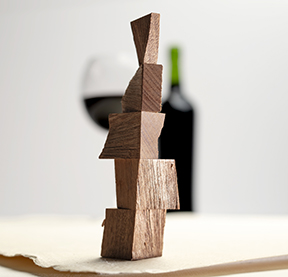Topping Up & Oak Cubes
Q I am a novice home winemaker and have been contemplating making the move from carboy and bottle-aging to barrel-aging some of my reds. It is my understanding that a new barrel can soak up quite a bit of wine when first placed in use. However, my question is what do you do to prepare for this? Do you set aside residual wine, aging in a carboy, and then use this when topping up? Can you give me some insight?
Jonathan Clark
Charlottesville, Virginia
A Indeed, this is one of the classic challenges faced by home winemakers and the reason recipes for the ubiquitous 5-gallon (19-L) batch aren’t always useful. When making wine for a specified storage volume, i.e. the 5-gallon (19-L) carboy (or in your case, the 50-gallon barrel), it’s always best to make the extra bit for “topping up” as you mention.
The topping wine can be made in a container that fits the proportional size of what you’re doing. In your case I would suggest making an extra 10 gallons (38 L) in addition to the batch you’re going to be making for your barrel. You’ll need to have that extra bit to top up the headspace that’ll occur as the wine settles down from its primary fermentation and loses its carbon dioxide gas. This, by the way, is the main source of the empty space encountered when putting new wine into barrels and has not much to do with the age of the barrel. If you soak up your barrel with a water and metabisulfite overnight and make sure there are no leaks before you fill it, you won’t lose any more wine from your new barrel than from any other. Sure, some wine is absorbed by the wood and some wine (usually alcohol) is proportionally evaporated through the wood over time, but the CO2 loss is much greater. There is a myth that tons of wine is lost as the barrels “breathe,” but over a wine’s life, much more volume is lost during primary and mL fermentation.
Q When using oak cubes in a recipe from concentrate, at what stage in the process should they be added. Also, what’s the general time frame that they should be left in the must or wine? If it helps, I am using American oak, medium toast in a Zinfandel recipe.
Ron Ferraro
via email
A Ah, the timeless pairing of American oak and Zinfandel. It’s a taste combination that’s got more than 100 years of history in U.S. winemaking and if the number of Zin labels that sport something like “aged for 18 months in American oak” is any indication, then its second century is off to a good start. Zinfandel, as a powerful, tannic and jammy red is a good canvas for the bold, broad brushstrokes of American oak — the American wood’s aromas of vanilla, clove and butterscotch are often too overpowering for more elegant, lighter varietals like Pinot Noir or Nebbiolo.
Most wineries choose to age their Zinfandels in at least 50% American oak (the other percentage being made up by French or Hungarian) in the form of 50-gallon (190-L) barrels. Using oak barrels is by far the most traditional way of aging wine as they impart not only aromatic but also structural and mouthfeel benefits. However, it’s also more and more common for winemakers, especially those that are making quantities too small to conveniently fit into a standard barrel, to use oak powder, chips or cubes to get some of the same flavor and aroma benefits without buying or caring for barrels. To this end, oak adjuncts (industry jargon for non-barrel oak) are often sold at different levels of toasting, just like barrels. The heavy-toasted oak imparts more “burnt” aromas like coffee and chocolate and medium-toast products contribute smells more mellow on the caramelized scale like allspice, dulce de leche, toasted bread and vanilla.
The question then becomes, how to best approximate what a barrel would do to a wine using oak adjuncts and more specifically, at which stage should the oak bits be added and how long should they be left in a wine? As you might guess, there is no one correct answer except the one that always holds true: You must go by taste and have patience.
In my experience, with bold, big red wines, it’s safe to add oak chips at the rate of 1–3 grams per liter. The oak bits can simply be floated on the surface (as long as you stir them occasionally) but it’s best if they’re tied up in a small cheesecloth sack, tea bag-style, and submerged underneath the liquid by means of a food-safe weight like a few glass marbles or a stainless steel hose fitting, depending on the size of your “tea bag”. Sample the wine at least once a week to determine when it’s “done” according to your tastes. Depending on the wine in question and the toast level of the oak, this could be anywhere from 1–6 weeks. Ideally, the effects will be subtle and the oak aromas and flavors will only serve as a grace note on top of all the other wonderful things already present in your wine. Now for a few caveats, if I may:
Realize that fermenting wine will be warmer than wine that has been through the primary fermentation and adding oak cubes, chips or powder during the active fermentation, with the increase in temperature, might cause you to over-extract before you realize it. This is why, especially if you’re new to winemaking, I suggest you add oak adjuncts after the primary fermentation is complete and you’ve racked the wine off of its gross fermentation lees — i.e. when the wine is about four weeks old. This way, you don’t have any weird fermentation aromas, a bulky cap and lots of chunky lees (in addition to high temperatures) to get in the way of determining when you’ve added enough oak to your wine.
Similarly, wine that is high in alcohol will more quickly absorb oak flavor and aroma than those that are not. Alcohol is a better solvent than water and as a result, it’s easier to mistakenly over-oak higher alcohol wines than those that are hovering around a moderate 11.5–13%. Wine that’s above 13% may need to be tasted more frequently in order to avoid getting too much oak character into the wine.
Also keep in mind the surface area of the oak product you’re using, as pieces of wood that are smaller, when added at the same weight to liquid ratio as larger pieces, will more quickly impart wood aroma and flavor than larger-sized particles. If you’re working with a very fine oak powder, it’s reasonable that 0.1–0.3 grams per liter will be more than enough to give you the slight oak flavor you’re looking for. Since I don’t know the size of your oak cubes, it’s difficult to suggest an addition rate. The good news is that you can always add more later. That’s the beauty of using oak products; the danger is that you can never go back once you’ve added too much.





